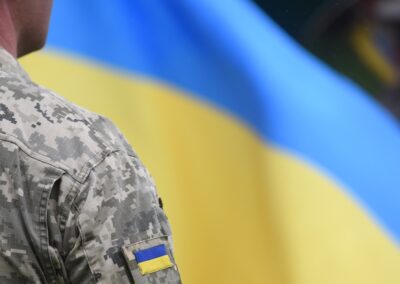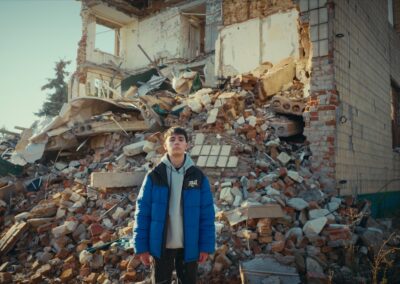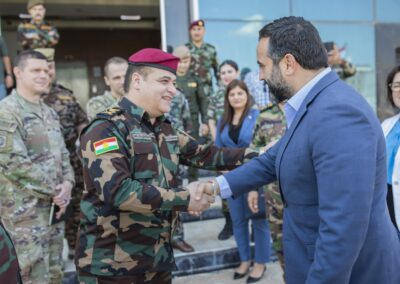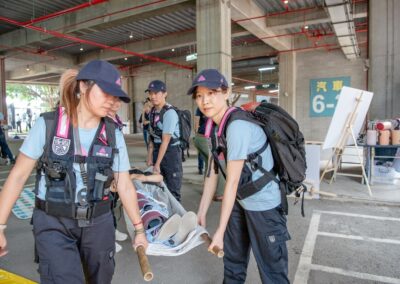Showcasing American Goodwill in Tajikistan

For an American, Panjakent is not an easy destination to reach, nor—to be frank—is it so simple to pinpoint on a map. As with any worthy place or thing, the remote town of 33,000 in northwest Tajikistan rightly requires the extra effort. Earlier this month, I joined a US Army Civil Affairs team on the serpentine four-hour drive from Dushanbe, Tajikistan’s capital, to Panjakent. We were traveling to make final preparations for a ceremony to mark the handover of 50 hospital bed sets, provided by SoA, to the Panjakent Mental Health Clinic.
This humanitarian effort at a medical facility, in a far-flung stretch of Tajikistan, brought together a wide cast of actors: SoA, the US Department of Defense, US Department of State, the government of Tajikistan, local leaders, and various vendors and local enablers. The team effort was a model of effective alignment of resources and capacities by distinct stakeholders against complex challenges.
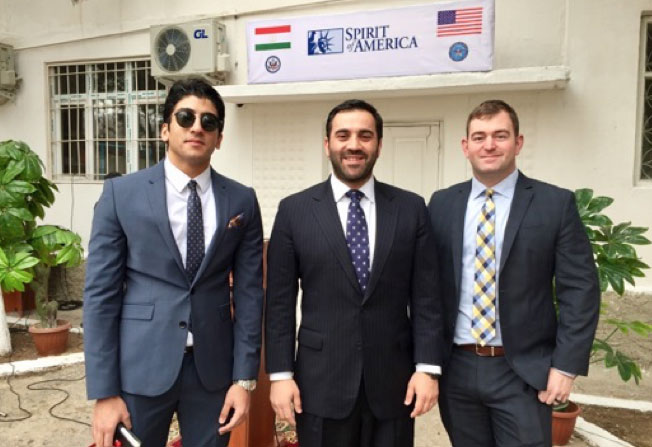 Zack (center) with two members of the US Army Civil Affairs team.
Zack (center) with two members of the US Army Civil Affairs team.
To reach Panjakent, we drove north from Dushanbe through jagged mountains that topped 11,000 feet in elevation. Glossy white scars remained visible on the rocky terrain from dozens of avalanches that had roared down the slopes earlier in the year. It was a harsh winter for the good people of the region. Life can be a struggle in these parts with unforgiving terrain, minimal resources, and sparse material comforts. But the folk here are gritty, and their spirit, it struck me, is just as resilient as the mountains that surround them.
Two hours into the trip, we turned west into a funnel-shaped valley system that became flatter and wider the further we traveled from its stem. With the claustrophobic embrace of the mountains behind us, we basked in the serenity of more level terrain. By the time we closed in on Panjakent, the once imposing mountains had retreated into the distance to the north and south, giving way to a broad, lush valley. Across its floor, the Zeravshan River (“the spreader of gold”), heavy with snowmelt, flowed with unchecked fury into Uzbekistan to the west.
A flurry of tasks awaited us the following day as we prepared for the distribution ceremony. At the clinic, staff and laborers assembled the bed sets, washed windows, cleaned every corner of the building, and added a fresh coat of paint to the walls. The extra effort was a reminder of the importance of hospitality for the people of Tajikistan and the pride they feel in their community. For our part, we met with the Deputy District Governor and the clinic’s director, Dr. Odinaev Zaynitdin, to make final arrangements.

Chatting with clinic director, Dr. Odinaev Zaynitdin.
In many ways, the process of planning and implementing this project—the meticulous coordination between the US and several levels of Tajik government—was just as important as its tangible outcome, the distribution of 50 beds to improve the clinic’s capacity. As a result of this collaboration, the US forged new relationships and strengthened existing ones, further enhancing its influence and prestige in a strategically important region.

Me and clinic director, Dr. Odinaev Zaynitdin.
The morning sky on the day of the ceremony was overcast, but we were grateful still: no rain. Smartly dressed staff lined both sides of the entryway, waiting to kick things off as a group of patients gathered in the courtyard. Local officials and notables congregated around the building’s entrance, exchanging local news and salty jokes.
At precisely 9:30 am, US Ambassador to Tajikistan, Elisabeth Millard, arrived. Joined by the Deputy District Governor, she made her way to the podium area. Speaking first, the Deputy District Governor expressed his gratitude to the Ambassador and the United States for assisting the clinic. Next, Ambassador Millard offered brief remarks, highlighting the importance of 25 years of bilateral cooperation between the US and Tajik governments.
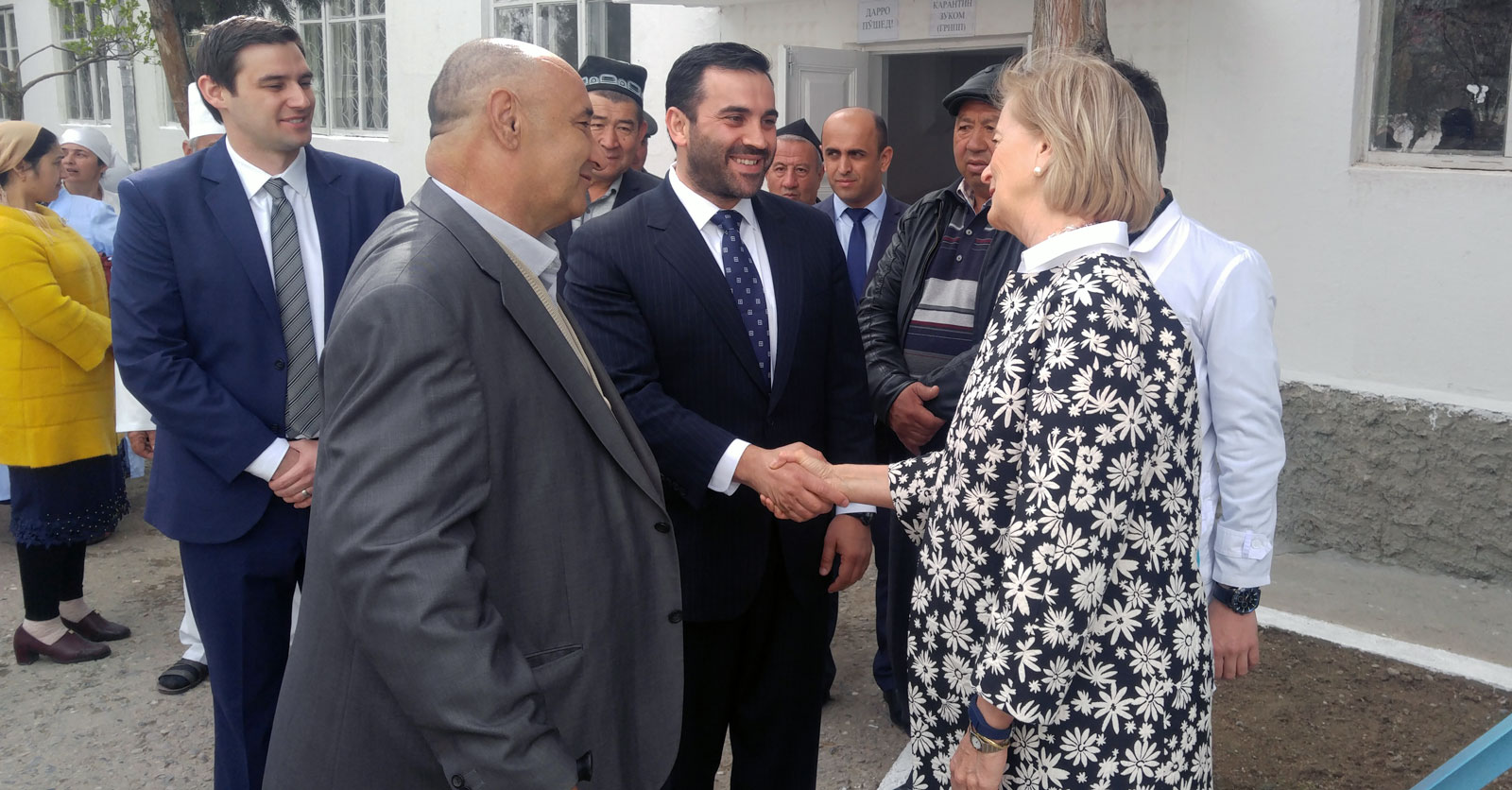
Meeting with US Ambassador to Tajikistan, Elisabeth Millard.
With formalities concluded, we were ushered into the clinic. Passing from room to room, we saw first-hand the impact our cooperation had achieved before stepping back out into the courtyard. American diplomats and soldiers mingled easily with local officials and community leaders. To me, this muddled scene was what right looked like.
As we walked out, I found myself struck by a peculiar thought. Here, in a small town, more than 6,500 miles away from our nation’s capital, the full potential of American capability and generosity manifested itself in a modest medical facility. Tajik lives, as well as American ones, are better off for it.
Zack
Middle East Project Manager



